Atomic Habits Book Details
Our mind tells us that massive success requires massive effort. But in Fact, You just need a small improvement to get an amazing result.
Every day, it’s essential to take small steps toward improvement. But we often underestimate the power of small improvements, that can do the miracle in our personal life.
The Atomic Habits PDF book by James Clear evolves around the fundamental concept of small improvements. 1% a day may seem like a tiny improvement at first, but Clear makes a compelling argument that small improvements can have the biggest impact over time.
According to Clear, “Habits are the compound interest of self-improvement“.
Title | Atomic Habits |
Author | |
Publication Date | October 16, 2018 |
Genre | Personal Transformation Self-Help |
ISBN | 0735211299 |
Language | English |
Total Pages | 320 |
Audiobook Duration | 5 hours and 35 minutes |
Rating |
Also Read: The 48 Laws of Power Summary
Who is James Clear?- Author Details
James Clear is a well-respected author, keynote speaker, and a leader in personal development. In addition to his many books, Automic habit is a bestseller.
Speakers like him regularly inspire audiences by delivering entertaining talks that teach the value of good habits, decision making, and continuous improvement.
He tries to explain his new ideas in a straightforward way, with examples that can be easily applied to everyone’s life. In his writing, he mostly talks about topics such as
- Starting and maintaining good habits
- The art of making good choices and avoiding bad ones
- How to utilize less time to accomplish more
- How to design more effective systems and processes
- How to get solid results without getting overwhelmed
The author has to spend hours reading a variety of books and has to do extensive research to deliver new ideas and concepts.
He is best at explaining his ideas in a way that is both understandable and actionable.
James Clear Explaining: How to Get 1% Better Every Day
Atomic Habits Book Summary
What is the point of improving every day? Well, check out the following interesting math.
# 1 – 1 % Better Everyday
Small incremental changes can result in massive results
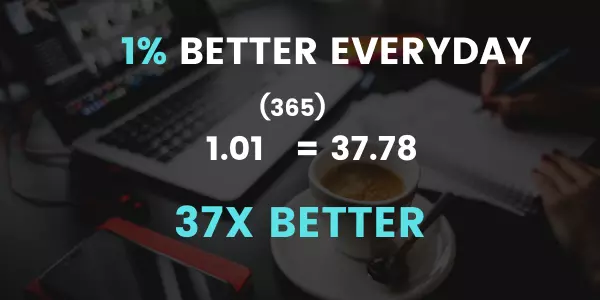
If you try to improve 1% every day for the next year, you’ll be 37 times better instead of where you were before that. The same principles apply whether you’re trying to lose weight, win a race, or want to start a business.
The effects of small habits can build up over time. The book Atomic Habits states that habits are supercharged by self-improvement. Similarly, your good habits multiply as you repeat them, just like how money multiplies through compound interest. The small things we do may seem insignificant on one day, but cumulatively, they can have a tremendous impact over the years.
The success or failure margin increases as time passes. Now it depends on you what you want to multiply. Getting into good habits will help you conquer time while getting into bad habits will only hurt you.
Also Read: The Psychology of Money Summary
# 2 – The Plateau Of Latine Potential
Forget about the instant results
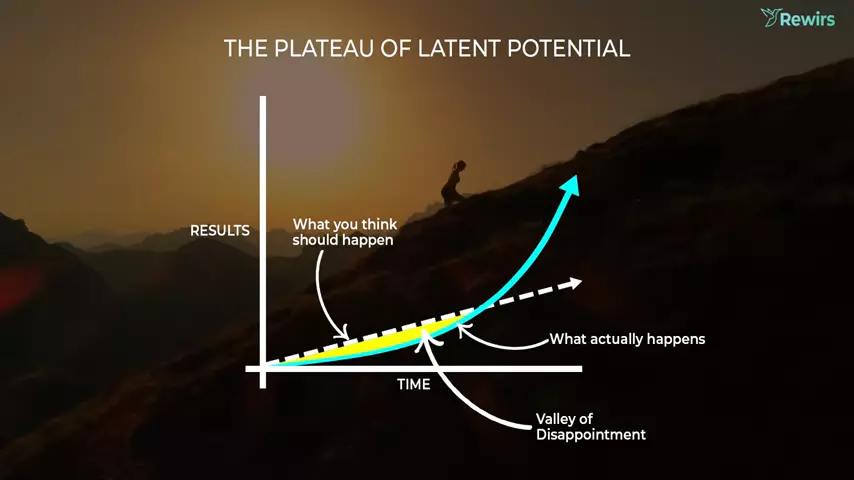
The instant gratification world we live in today makes it hard to follow long-term habits. Because our brain is trained for instant product delivery, instant information, instant content.
But if we adopt and understand the concept of delayed gratification then we could able to relate with James clear the plateau of latent potential.
Our view of progress has been linear and straight, but in reality, it has been long, curvy, and completely opposite to what we had anticipated. James believes we will not see habit results until we break through a certain point.
Actually, it takes a lot of time to get to that threshold. Because we can’t see any results during this period, we often lose motivation and give up on our good habits.
It is important to be prepared for the difficult and disappointing paths if you want to cultivate solid habits. Thus, you must train your mind to be able to handle any disappointments and failures and you don’t have to stop until you cross the Plateau Of Latine Potential.
# 3 – The Cycle of Habits
How to Build Habits?
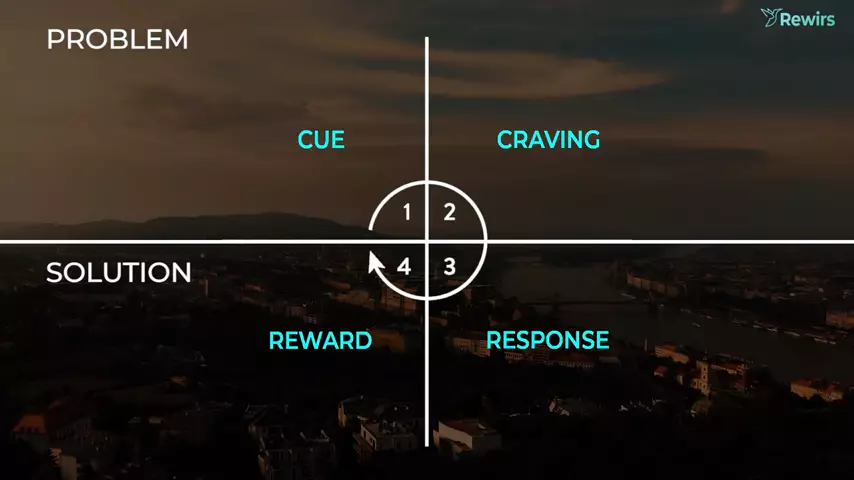
Atomic Habits explains habit formation like this:
1) Cue
Triggers you to do something. It already knows what reward you will get after doing some action.
2) Craving
Every habit is motivated by this force. Each craving supports a desire for change within yourself. Our desire for a fulfilling outcome motivates us to take action.
3) Response
It is an actual habit you engage in that defines your response, it can either be through thoughts or actions. You can either respond to a situation that is motivating you or friction-based.
4)Reward.
Each habit has an end goal that is called Rewards. Detecting the reward is the cue. A craving occurs when we want a reward. The reward is the primary motivation of the response.
The problem phase occurs when you realize that you need to change something. Cues and cravings are part of the problem phase.
The Problem-solving phase consists of the response and the reward. In this phase, you take the action and achieve the success or desire you want.
When you begin the habit you don’t need to be aware of a cue. We can take action when we see an opportunity and it does not have to happen intentionally.
Also Read: Rich Dad Poor Dad Summary
# 4 – 4 Laws of Behaviour Changes
- 1st Law: Make It Obvious (Cue)
- 2nd Law: Make It Attractive (Craving)
- 3rd Law: Make It Easy (Response)
- 4th Law: Make It Satisfying (Reward)
Let’s try to understand each law with a simple example.
Build Good Habit Example
Let us assume you want to develop some reading habits but you find it hard to start because of limited time or routine.
It is easy to get into the habit of reading if you adhere to the 4 laws of behavior change.
1st Law: Obvious (Cue)
You can keep the book near to your bed. So when you go to bed you can see the book and start reading. It is very obvious that when you look at any object, it triggers a thought about it.
2nd Law: Attractive (Craving)
You can read the book comfortably while lying on the bed.
3rd Law: Easy (Response)
There’s no need to go to the shelves and find the book you’re looking for.
4th Law: Satisfying (Reward)
Completing each chapter daily will give you a sense of satisfaction and reward.
Break Bad Habit Example
In the same way, if you want to get rid of bad habits, then you have to follow the same rules in the exact opposite way.
Let’s say you wish to stop your smoking habit, then follow the steps in the reverse way.
1st Law: Invisible (No Cue)
You don’t need to buy cigarettes, so there’s no need for cravings. In addition, make sure cigarettes are not in your pocket, work bag, or at home.
2nd Law: Unattractive (No Craving)
Engage yourself in physical activities. Join a gym, work out at home, follow a healthy diet. As a result, you won’t feel a craving for cigarettes and you will find cigarettes less attractive.
3rd Law: Difficult (No response)
Stop spending time with your smoking friends. Taking the route where you always buy cigarettes might not be the best choice.
4th Law: Unsatisfying (No Reward)
If you work out at the gym regularly and follow a healthy diet, you’ll be more satisfied, and smoking won’t be so satisfying.
The principles can be applied to any kind of routine or habit you wish to implement or eliminate.
Also Read: Think and Grow Rich Book Summary
# 5 – Focus On Systems
Instead of focusing on goals, James suggests we focus more on the daily systems. A Productive and Disciplined daily process will lead us to successful outcomes over the long term. It is not just about setting goals. Winners and losers both set goals for themselves;
However, an individual who knows how to get the most out of the system can achieve them. It is better to focus on your daily routine and the system rather than your goals.
If you are satisfied after you achieve any goal, you are only focused on one specific goal. It is better to focus on the system and process to achieve small milestones every day.
# 6 – Shape Your Identity
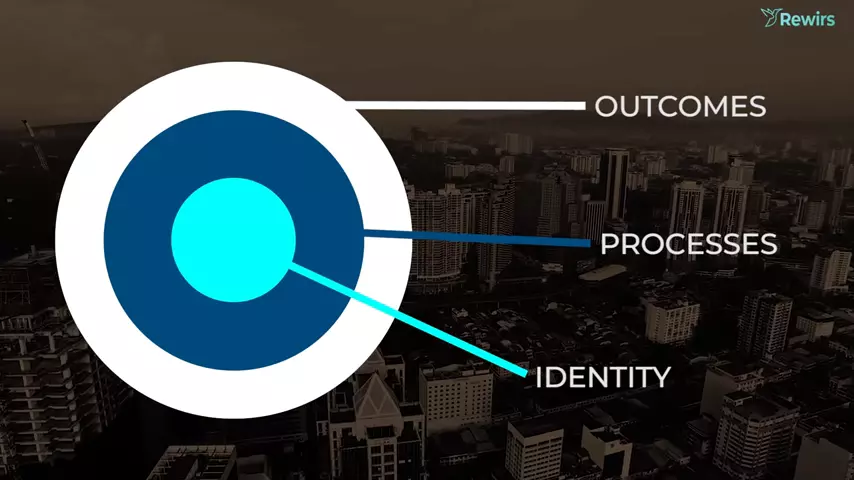
Here is a simple example. Losing weight or achieving something is an outcome, That is operated at the goal level.
The second layer is Process. For you is to go to the gym, eat healthy foods, and take action going forward is a process.
A third layer is your identity.
A good example of this is when someone is offering cigarettes, the first person says “No thanks, I am trying to quit cigarettes”, and the second person says no thanks, I am not a smoker!
Although these two differences are small, language holds great power and can produce bigger results.
Studying for exams should not be your objective; instead, your goal should be to become a proficient student. You should not aim to earn millions of dollars but rather become a good leader. You should not be looking to get fit, but rather to learn how to be disciplined.
Why you should read Atomic Habits Book?
If you want to make behavioral changes, Atomic Habits is the book you’ve been looking for. Regardless of how many years you have been practicing the habits, the book is a good refresher course.
It is a great way to reinforce your commitment to developing new habits that will help you change your life.
The book seems believable and easy to follow, making it ideal for a first-time reader.
It is true that behavioral change is difficult and takes time. Weak strategies contribute to the fact that so many people fail to achieve any results.
There are numerous proven strategies in this book to help you attain the transformation you seek.
Where I Can Download Atomic Habits PDF, Audiobook Free?
More than 2 million copies of the book have been sold, and it is a New York Times Best Seller.
Presently, it is available in Paperback, PDF (e-book), and audiobook formats.
Considering the length of the book (320 pages), it will take a good amount of time to complete it. Audiobooks are a better choice for readers who want to complete the book quickly.
You can read or listen to the audiobook completely free in the following places.
Website | Paid / Free |
Free | |
Free |
Also Read: 10x Rule Book Summary

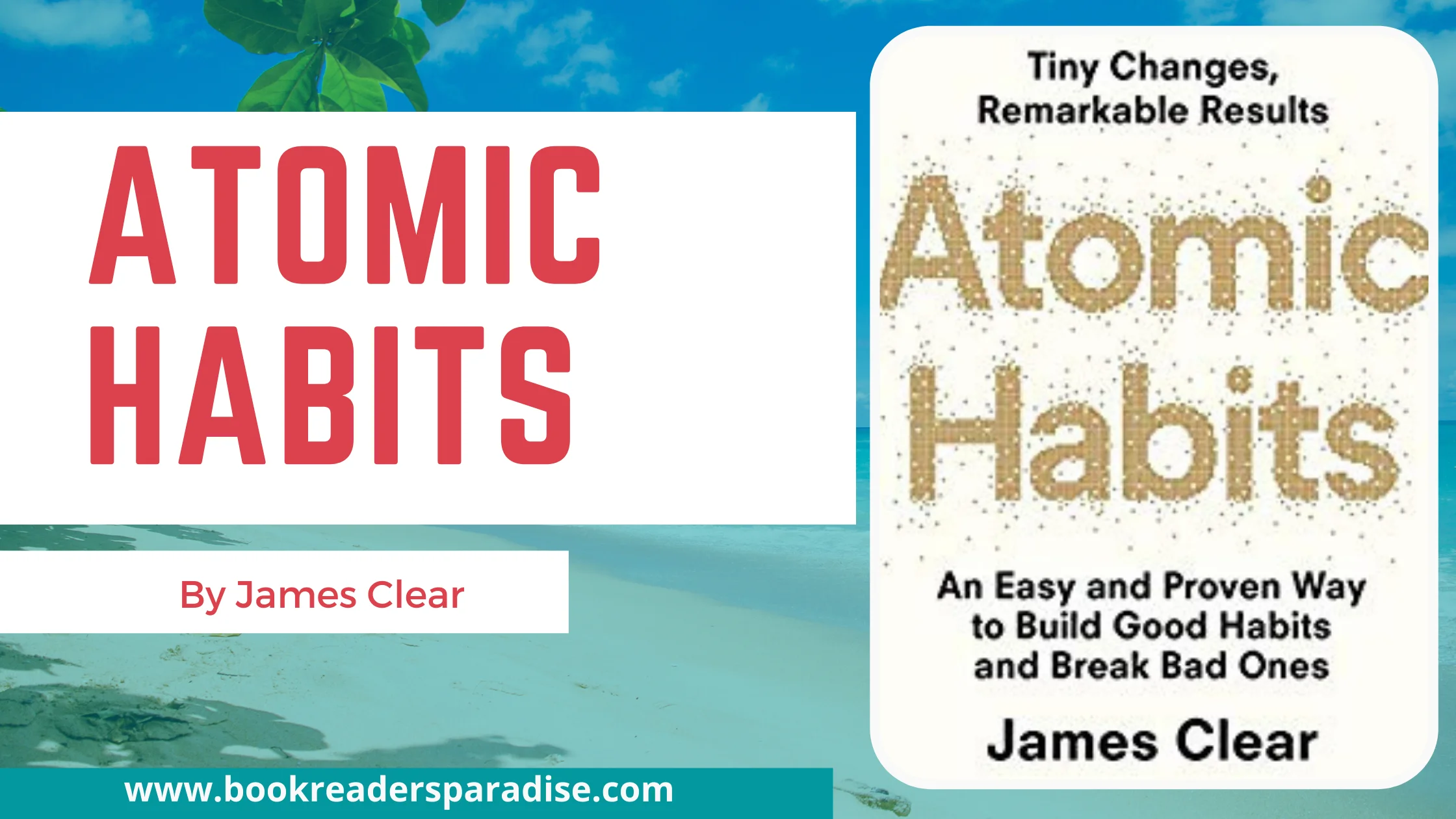

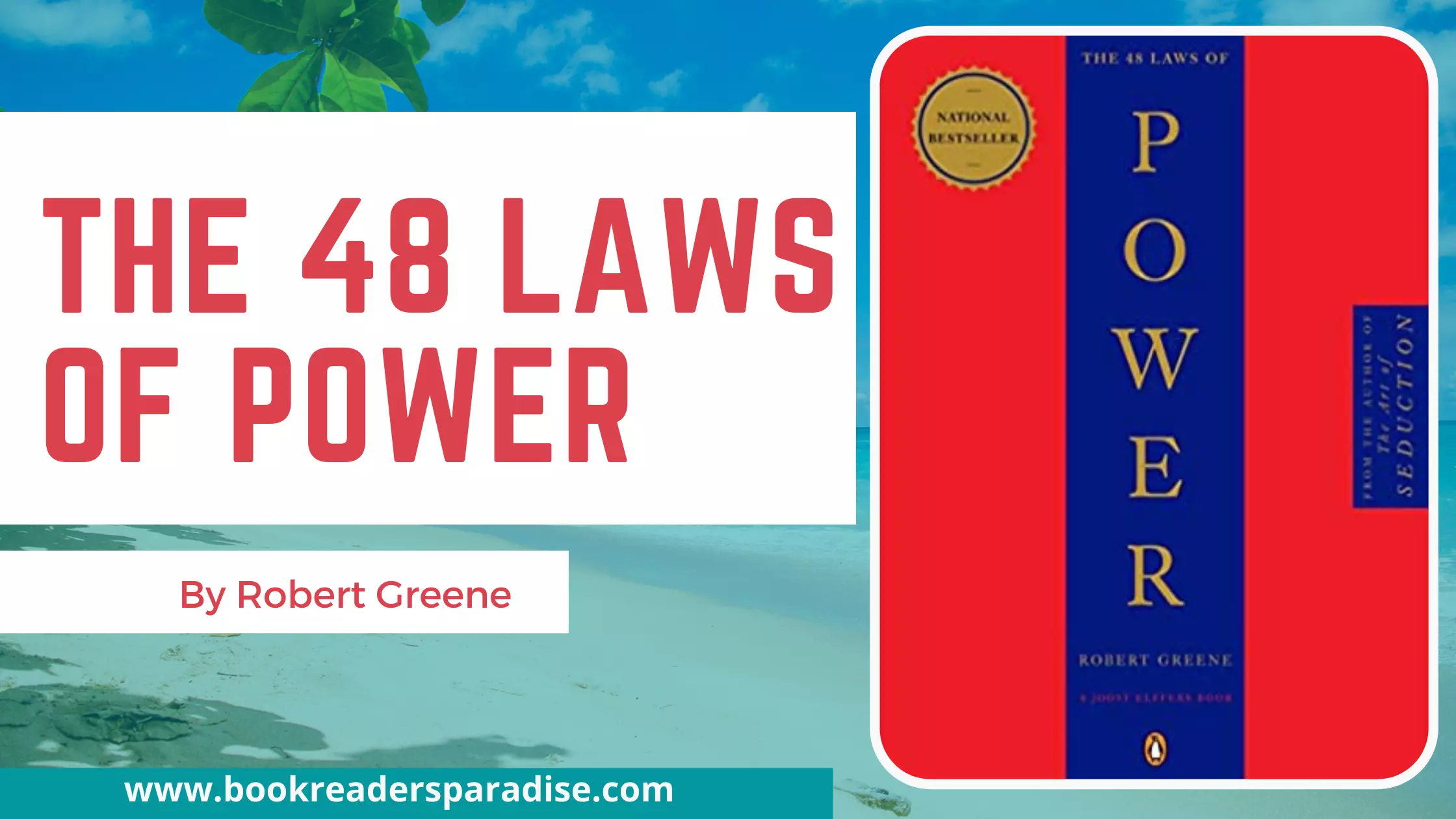
A nice book
Such a good read!